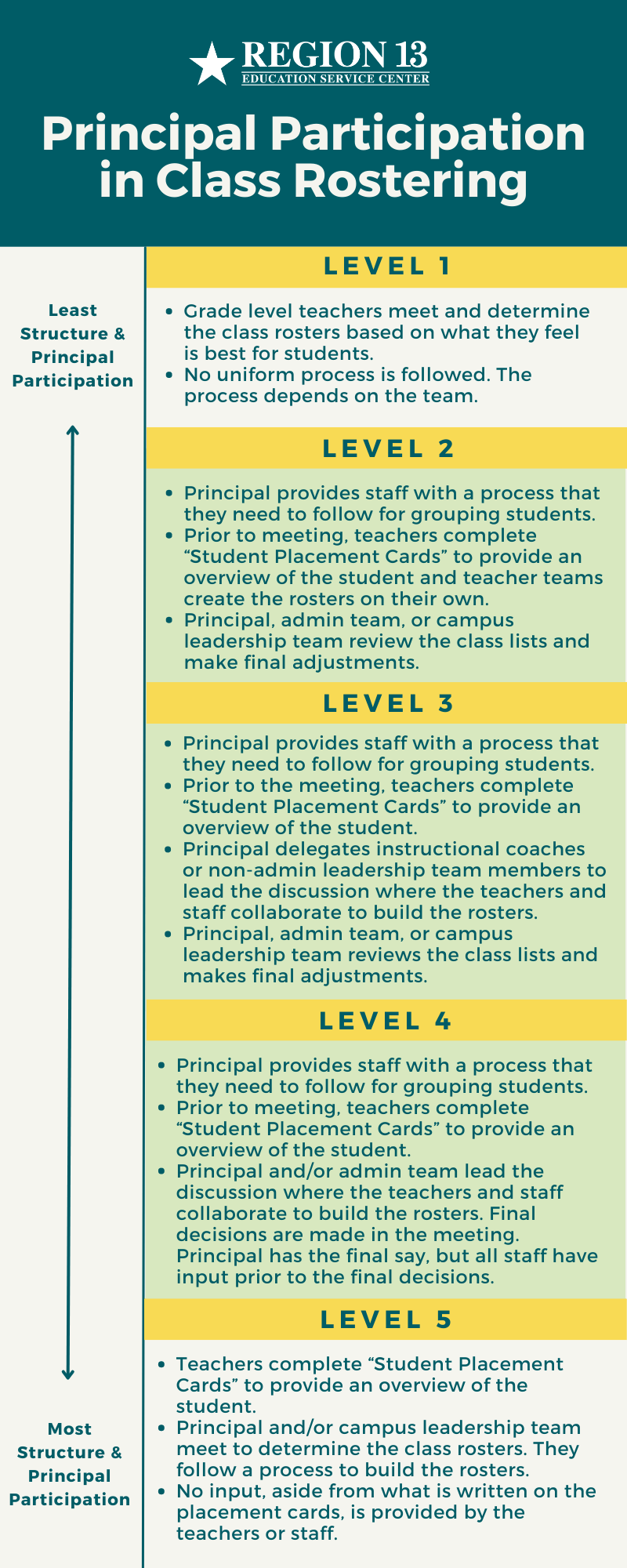This blog is part of The Practical Principal, a monthly series for today’s school leaders. We cover a variety of relevant topics and provide actionable tips straight from experts in the field. Be sure to check back for more helpful resources!
It’s that time of year again! The end-of-year frenzy has begun, and as an elementary school leader, you’re gearing up for the next school year. Building balanced class rosters is one of the most critical tasks on your to-do list. With so many factors to consider, it can be overwhelming. But don’t worry; we’ve got you covered! Let’s dive in and explore class roster development.
Why Developing Class Rosters Matter
In the yearly ritual of building class rosters, the school staff collaborates to determine which combination of students would best create successful learning outcomes for the coming school year. This may not be the most glamorous part of your job, and other items, such as budget, professional development planning, and staffing allocations for next year, supersede this task’s importance.
But class rostering has the potential to be a proactive leadership move that helps support your learners and staff for the following school year. As a principal, you are leading the process to ensure the right people are in the best place for learning.
Who Should Help Decide Classroom Placement?
Now that we’ve established the value in this yearly process, as a campus principal, you need to determine to what level you or your admin team will participate in the class rostering process. Every campus varies, and every principal has a different leadership style. With that in mind, you can decide how to lead or support this process based on what will best benefit student success.
In addition to determining who will lead the meeting and who decides how it is structured, you should also consider what level of collaboration best promotes successful student outcomes as you build your rosters.
Some support staff you might want to include as you’re building class rosters are:
- interventionists
- special education teachers
- gifted and talented teachers
- instructional coaches
- counselors
- behavior teachers
You need to strike a balance between ensuring that support staff is collaborating in the process and maximizing the time and schedule of your team. No one wants to attend a meeting to be a warm body. You must determine what will best serve your students and staff.
On the one hand, varied support staff will provide a better picture of the whole child and allow the team to see them beyond a snapshot of academic data. On the other hand, if you require all support staff to attend, there might be “too many cooks in the kitchen.” As always, you need to base this decision on the needs of your campus and what will best support student success.
How Much Structure Does My Team Need?
Below is a range of structures and support a principal might choose when determining their class roster meeting process. While you need to design the process to best fit your campus needs, we recommend that your participation fall somewhere in one of the green sections.

Graph of Principal Participation in Building Class Rosters
How to Place Students in Class Rosters
Review Student Data
Once you decide who needs to support the decision-making and the degree to which they will provide input, you must determine a protocol that your class roster teams will follow.
As with most school-based processes, it is essential to begin with data. Your students are more than an end-of-year benchmark score, so consider multiple data factors.
Some pieces of data that you might consider are
- special program participation (SPED, bilingual, etc.)
- end-of-year reading and math benchmark scores
- reading proficiency level
- behavioral data (referrals, counseling needs)
- learning style
- student growth over the year
- special accommodations for instruction or testing
- peer to peer dynamics
- peer-to-teacher dynamics
Consider Students with Intensive Support
The next step is to advocate for the needs of all students. Specifically, those students who need more intensive support for academics or behavior. Some groups that need special consideration when the teams are developing class rosters include special education, 504, emergent bilinguals, and gifted and talented.
After placing students onto the roster, the team should consider the needs of students with exceptional academic or behavioral needs that might not fall into the identified categories above. For example, students performing below grade level need interventions that might not be identified as SPED or 504.
As a school leader, you know these students will need additional time and support from their teacher, so it’s important to advocate for that need by placing them on a balanced roster, and the teacher has the time to provide that support.
Take Classroom Dynamics into Account
Additionally, it’s important to carefully consider the dynamics between your students.
- Are there any students with a Stay Away agreement or toxic dynamic?
- Are there students that would do better if they were grouped with other specific students?
- Are there students that need more intensive behavioral support and frequent check-ins?
- Would a student do better with a particular teacher due to personality, learning style, or seeing that teacher as a role model?
These are all critical questions to consider as you place students into classes.
Balance the Rest of the Class
Once you address students with exceptional academic or behavioral needs, the rostering team must balance the class needs and dynamics with the remaining students. Balanced rosters are essential because they can prevent extreme behavioral needs, academic strains in a class, and even teacher burnout.
One strategy many school leaders use to encourage balanced rosters is to create the rosters without assigning a specific teacher to the classroom. The team should assign a teacher’s name based on which teacher will best fit after they build the roster. Many school leaders recommend completing this process in collaboration with their leadership team to have a complete perspective on the needs and another critical eye that might catch any glaring imbalances or concerns in the grouping.
Key Takeaways for Class Rosters
To sum it all up, remember the following principles for building class rosters at the elementary level.
- The principal and/or assistant principal(s) need to be involved in decision-making at some level.
- Consistent structure and processes are essential to ensure all student needs are advocated for.
- Well-rounded teams of staff that best know the students should be involved at some point in the process.
- View the students through multiple data-informed lenses and build balance on the rosters.
Let us know your thoughts or other ideas in the comments below!
A special thank you to Carolyn Ferguson of Comal ISD and Eliza Gordon of Round Rock ISD for providing input and suggestions from their experience in the field!
Natalie is an Educator Evaluation and Leadership Administrative Specialist at ESC Region 13.






Add comment